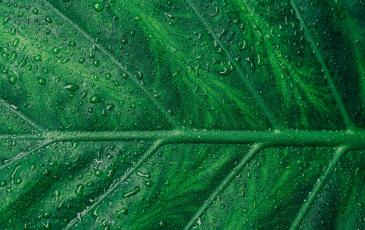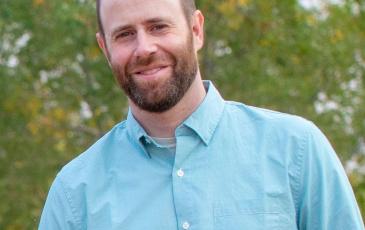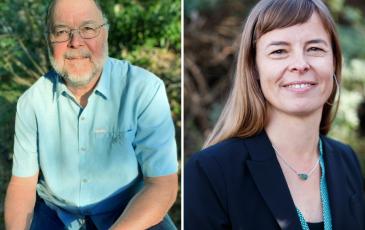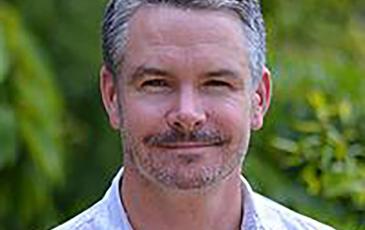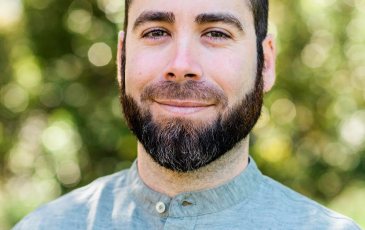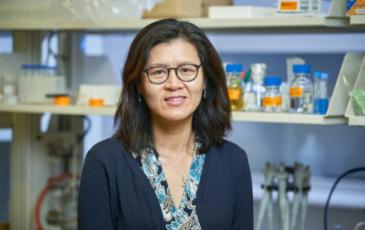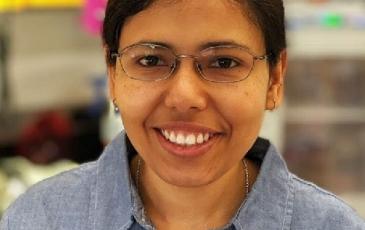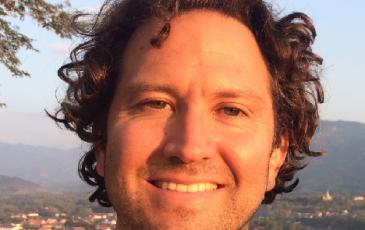To perform their function, biological systems need to operate across multiple scales. Current techniques in structural and cellular biology lack either the resolution or the context to observe the structure of individual biomolecules in their natural environment, and are often hindered by artifacts. Our goal is to build tools that can reveal molecular structures in their native cellular environment using the power of cryo-electron tomography to image biomolecules at molecular resolution in situ. I will show how we used these techniques to discover how jumbo phage build a compartment that compartmentalizes its replicating genome to avoid host defenses that acts akin to a eukaryotic nucleus.
Past PMB Seminars
For a schedule of all Plant & Microbial Biology events, seminars, and lectures visit our calendar.
Why Do Plants Use Water? Looking Ahead to a Future of Climate Extremes
Why do plants use water? This apparently simple question has multiple answers that remain controversial today. Come to learn from professor Benjamin Blonder about the surprisingly complex and active behaviors of plants, what they mean for life in a hotter and drier future, and why they matter for how we should think about human societies.
]]>
Horizontal Acquisition of MutS Genes Shapes Plant Organelle Biology
The presence of endosymbiotically derived organelles with their own genomes (mitochondria and plastids) is a defining characteristic of eukaryotes, but the mechanisms by which these genomes are maintained and expressed differs wildly across the eukaryotic tree of life. I will present work from our group on how fundamental features of DNA repair and gene expression in plant organelles contrast with other eukaryotic lineages and how these differences have been shaped by horizontal/endosymbiotic gene transfer events. Specifically, I will show how plant MSH1, an enigmatic member of the MutS DNA repair family that was likely acquired from giant viruses, is responsible for the remarkably low mutation rates in land plant organelle genomes. In addition, I will describe how bacterial-like MutS2 genes were acquired via plastid endosymbiosis and, thus, distinguish plants from other eukaryotic lineages. Recent work in our lab suggests that these genes play key roles in maintaining plant organelle gene expression. Therefore, peculiarities of the Central Dogma of Molecular Biology in plant organelles reflect their complex evolutionary history and acquisition of foreign MutS genes.
Origins and Innovations of Science in the U.S. National Parks
The University of California, Berkeley, Institute for Parks, People, and Biodiversity will present the A. Starker Leopold Lecture "Origins and Innovations of Science in the U.S. National Parks," September 27, 2023, at the University of California Botanical Garden. Conservation writer Jerry Emory and national park science leader Alison Forrestel, Ph.D., will speak. Patrick Gonzalez, Ph.D., climate change scientist and Executive Director of the Institute, will moderate the event.
Trait-based exploration and simulation of soil microbiomes
Soil is the most biodiverse habitat on Earth and regulates global biogeochemical cycles. This "life support system" provides crucial resources for humanity. However, it has been degraded by past land-use practices and is increasingly threatened by changing climatic conditions, as well as the pressures resulting from growing populations and economies. Microbes play a vital role in soil function, and consequently, our understanding of soil function and our ability to predict it are limited by our knowledge of the functional traits of soil microbes, most of which may never be cultivated for isolated study.
Advancements in technology continue to unveil new lineages and hypothesized functions of soil microbes. Importantly, the functions of soil microbes can now be linked within 'species' units by directly assembling genomes from soil communities. To address the complexity of soil microbiomes we have developed a hierarchical trait-based approach that distills microbial functional diversity into tractable units (guilds). In this seminar, I will discuss recent work harnessing the expanding resource of soil bacterial and archaeal genomes to investigate trait variation and trait linkage. I will also present our research on the development of trait-based models, including a novel approach to derive parameters for uptake kinetics directly from genomes, and provide examples of emergent behavior resulting from the interactions of metabolic, thermodynamic, and life history traits. Finally, I will conclude by sharing some thoughts and examples of how to apply these data-driven microbial simulation approaches to complex ecosystems.
The genomics of climate change adaptation (and extinction)
The ongoing climate change has put a spotlight on rapid evolutionary processes that could aid species adapt to new environments. However, many questions remain unanswered: What is the genetic architecture traits influencing fitness across environments? Is this genomic architecture predictable? Can we understand genetic constraints across multiple adaptive traits? How is genetic variation lost during extinction? To address these questions, we combine statistical genomics with experimental ecology and genetic engineering approaches using the plant species Arabidopsis thaliana as our experimental climate change genetics model and scaling up insights with publicly available genomes of diverse plant species.
[Buchanan Lecture] The “endless forms”: Genetics, development, and evolution of flower diversity
In this talk I will discuss the use of monkeyflowers to probe the genetic and molecular bases of floral trait variation among species, to characterize the developmental mechanisms of pattern formation, and to test the adaptive significance of floral trait variation in the evolution of pollination syndromes.



